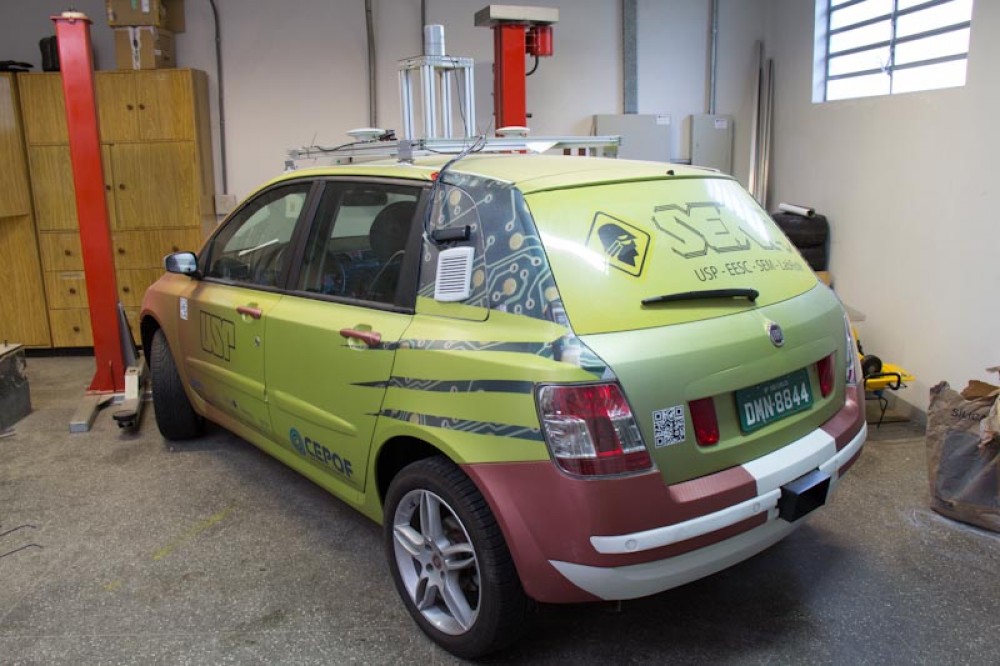ART
The ART group (Aerial Robots Team) develops research focused on multi-rotor aerial robots. The main activities are related to new aerial robot designs, aerodynamic studies for better flight autonomy, stabilization algorithms and guidance and navigation methodologies. The ART group develops using flight simulators such as Microsoft Flight Simulator (MSFS) with the Software-In-The-Loop methodology through the Variable Management Software. The surveys are also developed using the Hardware-In-The-Loop methodology in order to verify the responses of the systems during the experiments. Another area of interest for the group is Embedded Computer Vision and Neural Networks to develop and give more autonomy to aircraft during missions.
Time ħelvis
O time ħelvis works with land mobile robotics to develop research focused on navigation and perception in an agricultural environment. The team's objective is the development of systems for autonomous navigation of large vehicles in agricultural environments. In this context, we believe that scaled-down prototypes substantially improve the learning stage in the development of control systems. That's why today we work with vehicles with electric drive equipped with sensors to perceive the environment.ħelvis III is a prototype of an electric vehicle with a steering system coupled to the front wheels by an Ackerman mechanism, and a propulsion system also linked to the front wheels but by a differential mechanism. With an industrial computer as the central control unit, it is equipped with laser distance sensors for outdoor environments, GPS modules and an Inertial Measurement Unit (IMU).
SENA Project
The SENA project aims to develop an autonomous experimental vehicle that employs several embedded subsystems (sensors and actuators). Currently, the vehicle is used as an experimental platform for collecting sensory data in urban and rural environments. Thus, we can use data from real environments to accelerate the development and testing phases of embedded subsystems. Basically we are focused on researching and developing tools for self-location, navigation and mapping (all tasks that are essential to transform a vehicle into an autonomous mobile robot). Our prototype currently has five embedded industrial computers, a set of sensors for perception (GPS receivers, IMU, 3D laser scanners, and thermal and color cameras), and an auxiliary battery system. The prototype's payload capacity, processing power, and autonomy allow us to perform exhaustive testing of sensors and algorithms in various outdoor environments.

